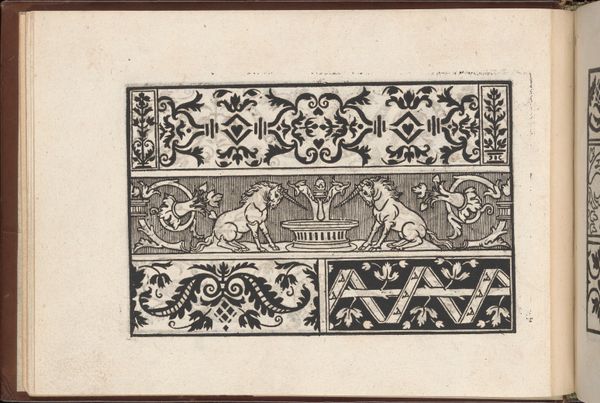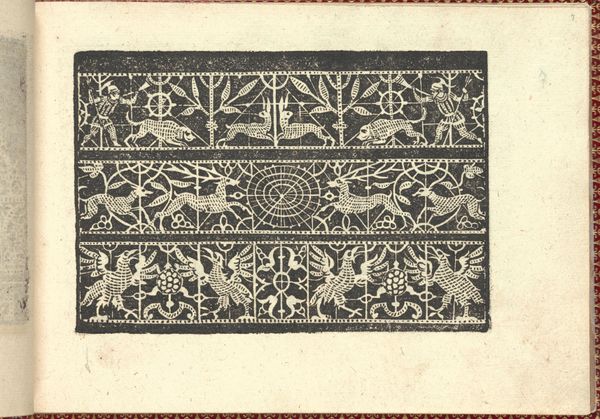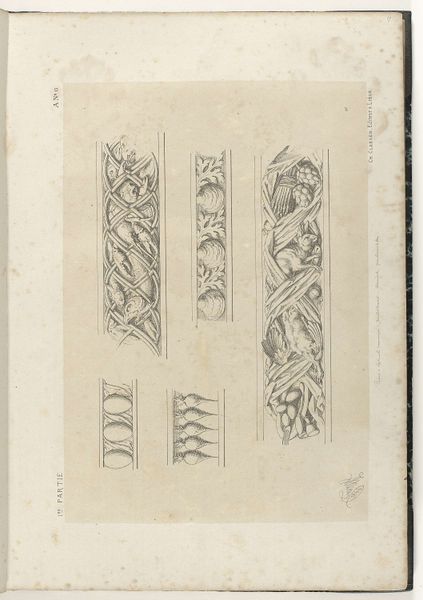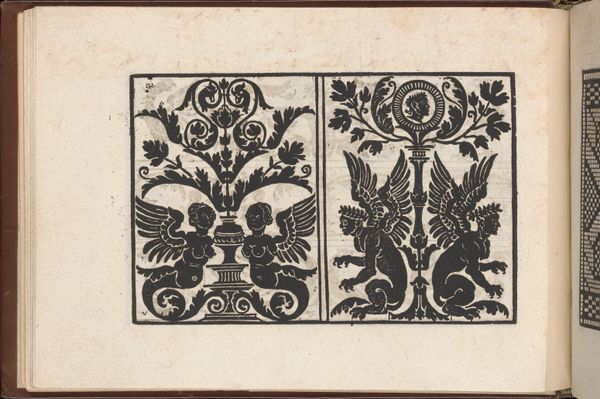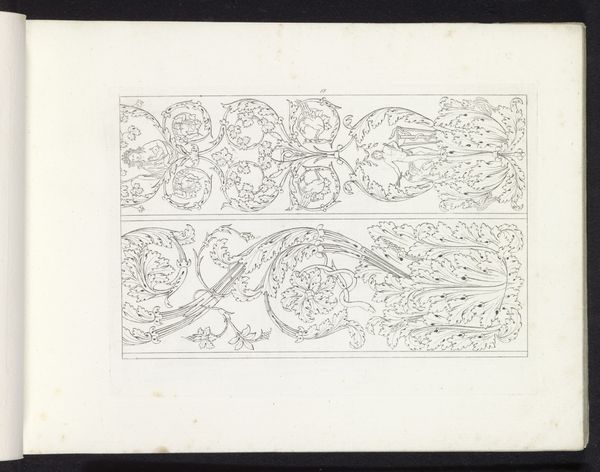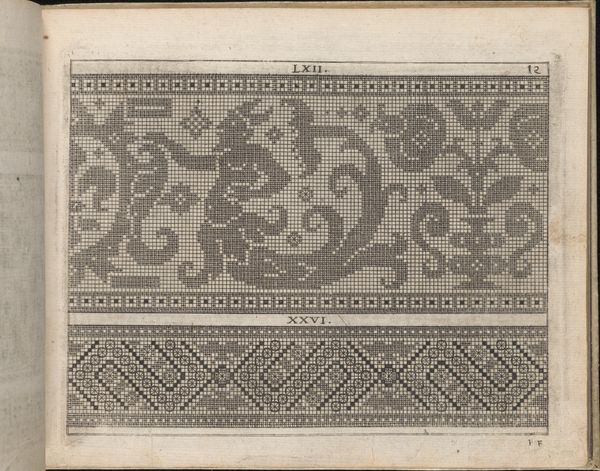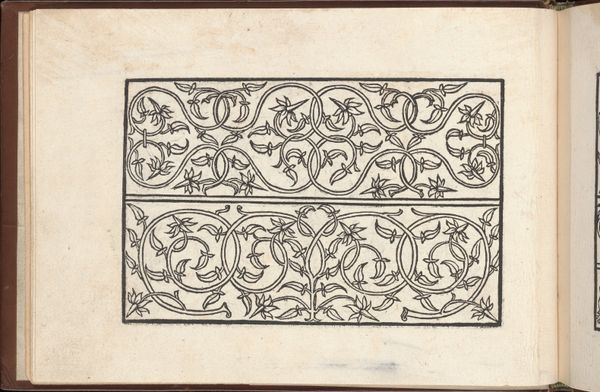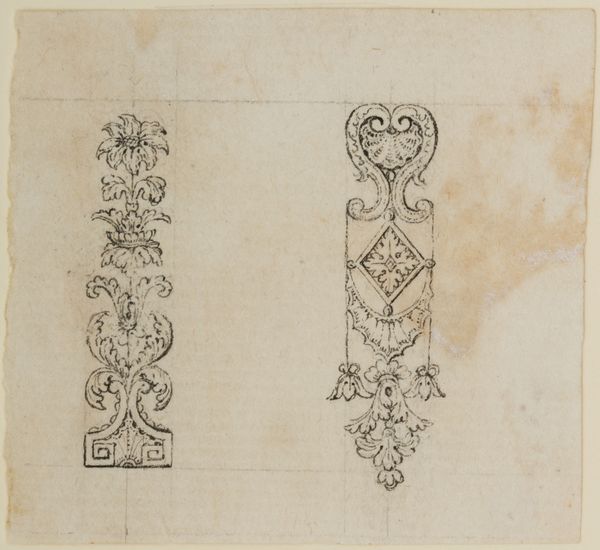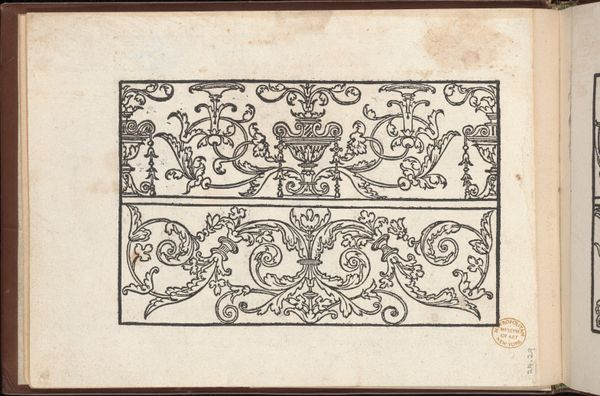
Dimensions: height 175 mm, width 230 mm
Copyright: Rijks Museum: Open Domain
Curator: Let's consider this striking graphic art piece at the Rijksmuseum, "Blad- en bloemmotieven en vlechtwerk," dating back to 1784-1785 and created by Jean Baptiste Echantillon. Editor: It's a pen and ink drawing, and immediately I’m struck by its formality. Each motif feels contained, almost like a set of instructions or guidelines. Curator: Indeed. As the inscription says, these are designs for flat flowers and garlands intended for tambour and embroidery. Look at the sheer volume of detail, carefully planned out, suggesting significant textile production behind it. It's more than mere drawing, it's industrial design. Editor: I see what you mean about textile production. Each element carries its symbolic weight: the flowers and vines represent nature domesticated, while the sun-like forms hint at enlightenment ideals popular at the time. It presents an interesting dichotomy between control and ornamentation, especially during a turbulent period in European history. Curator: Right, consider also the materials: pen and ink, relatively inexpensive yet yielding complex designs, speaks volumes about the intended audience. This wasn't just for the elite, but likely a broader base of artisans needing such pattern books to standardize production, enabling consistent style across the items made. The creation of it has a repetitive aspect, it feels meditative. Editor: Absolutely. The act of embroidery itself carries symbolic meaning - women passing down history through intricate needlework. It reveals cultural memory and shared history among the craftspeople working in the period. Curator: Thinking about the original placement, these patterns were most likely intended to be mass-produced to serve royalty. The artist being described as "Brodeur Royal a Lyon" on the artwork gives insight to this patronage of these design templates for royal production of fabrics and clothing. Editor: These decorative artworks always speak to larger historical and social trends. Curator: Precisely. I was so engrossed in its practical usage; the industrial aspects behind the creation, whereas I didn't consider the deeper symbolical interpretations it could possess. Editor: And I was drawn to the iconography until you contextualized it as part of production culture. Art enriches from every viewpoint!
Comments
No comments
Be the first to comment and join the conversation on the ultimate creative platform.
